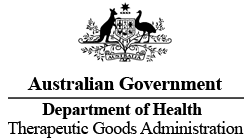WuXi Biologics
Offering End-to-End Solutions
监管机构资讯
U.S. FDA

Setting Endotoxin Limits During Development of Investigational Oncology Drugs and Biological Products Guidance for Industry (Draft: July 2020)
This draft guidance discusses the FDA’s current thinking on a risk-based approach to setting acceptance criteria for the control of endotoxins during the clinical development of oncologic drugs, intended for use in combination with other approved drugs or for the co-development of two or more investigational drugs. Recommendations for early- and late-stage clinical development are given below:
At early-stage clinical development:
- Parenteral (excluding intrathecal or intraocular) route of administration:
- For drugs that are small molecules or certain therapeutic biological products, the endotoxin limits of an investigational drug or the combined endotoxin limits of multiple investigational drugs administered concomitantly by a parenteral route should not exceed the limit specified in USP General Chapter <85> (5 EU/kg/hour, or 100 EU/m2 of body surface area per hour). Endotoxin contribution from approved components of a combination regimen needs not be considered;
- For all other investigational products administered parenterally, including cellular therapy and gene therapy products, in order to assess causality of observed adverse events, the combined endotoxin exposure from all agents (including approved concomitantly administered drugs) should not exceed the limits specified in USP General Chapter <85>.
- Intrathecal route of administration:
- Endotoxin exposure from all drugs (including approved concomitantly administered drugs) should not exceed that specified in USP General Chapter <85>. However, the FDA states the possibility (in rare cases) for justifications when the USP requirement cannot be met.
At late-stage clinical development:
- The specifications for endotoxin should be tightened to ensure the endotoxin limits will not exceed that specified in USP General Chapter <85> for a parenterally administered drug by the time of marketing application, considering the combined endotoxin exposure of the investigational drug and all concomitantly administered drugs cited in the “INDICATION AND USAGE” section of product labeling.
The intraocular route of administration is not addressed in this guidance.
CDER Guidance Agenda New & Revised Draft Guidances Planned for Publication During Calendar Year 2020 (Updated: July 2020)
This list is updated to reflect the guidance topics CDER is considering for development during calendar year 2020. The one item listed below is newly added and CMC-related:
- Responding to CGMP Observations on Form FDA 483
Manufacturing, Supply Chain, and Drug and Biological Product Inspections During COVID-19 Public Health Emergency Questions and Answers (August 2020)
- As of the week of July 20, 2020, FDA is either continuing to conduct only “mission-critical” inspections on a case-by-case basis or, where possible to do so safely, resuming prioritized domestic inspections, which generally include pre-approval and surveillance inspections, based on the determination of its COVID-19 Advisory Rating system. Foreign pre-approval and for cause inspections not deemed mission-critical remain temporarily postponed.
- “Mission-critical” inspection is defined. Factors include, but are not limited to, whether the products have received breakthrough therapy (BT) designation or regenerative medicine advanced therapy (RMAT) designation. The FDA also explains that the same definition is used for both domestic and foreign inspections.
- For applications that the FDA determines that an inspection is needed before the approval, FDA will communicate this to the applicant by either issuing a complete response letter or by deferring action on the application. However, sponsors will not automatically receive a complete response letter if the FDA cannot conduct an inspection.
Revocation of the Test for Mycoplasma (August 2020)
This rule, effective September 21, 2020, is to remove the specified test for the presence of mycoplasma for live virus vaccines and inactivated virus vaccines produced from in vitro living cell cultures because the existing test for mycoplasma is overly restrictive in that it identifies only one test method in detail to be used. This is to provide the flexibility for accommodating new and evolving technology and capabilities that may be more sensitive and specific.
Regulatory Submission and Procedure News Updates
Pilot Program for Request for Designation and Pre-Request for Designation Electronic Submissions (August 2020)
European Medicines Agency Post-Authorization Procedural Advice for Users of the Centralized Procedure (August 2020)
Vaccines, Gene Therapy, and Advanced Therapy Medicinal Products News Updates
The FDA’s Scientific and Regulatory Oversight of Vaccines is Vital to Public Health (September 2020)
Vaccines and Related Biological Products Advisory Committee; Amendment of Notice (September 2020)
SOPP 8413: Post-marketing Requirement/Commitment Related Submissions – Administrative Handling, Review, and CBER Reporting (August 2020)
SOPP 8110: Submission of Regulatory Applications — Exempt from eCTD Requirements (August 2020)
SOPP 8404.1: Procedures for Filing an Application When the Applicant Protests a Refusal to
File Action (File Over Protest) (August 2020)
Non–clinical Study Related News
Good Laboratory Practice for Non-clinical Laboratory Studies (July 2020)
Coronavirus Disease (COVID-19) Related News
Coronavirus Treatment Acceleration Program (CTAP) (Updated: September 2020)
Resuming Normal Drug and Biologics Manufacturing Operations During the COVID-19 Public Health Emergency (September 2020)
Guidance Documents Related to Coronavirus Disease 2019; Availability (August 2020)
Other News Updates
FDA Clarifies Types of Evidence Relevant to Determining the “Intended Use” of FDA-Regulated Products (September 2020)
Office of Regulatory Affairs Division Director; Technical Amendments (August 2020)
![]()
Questions and Answers on Regulatory Expectations for Medicinal Products for Human Use During the COVID-19 Pandemic (Updated: July 2020)
Below we provide one of the questions from this Q&A, as it is related to GMP certificates and authorizations for manufacturing and import.
2.2 Which measures will be taken in respect of GMP certificates and authorizations to manufacture/import in light of difficulties to conduct on-site GMP inspections due to restrictions linked to COVID-19 pandemic?
- The validity of GMP certificates for manufacturing sites, in or outside of the EEA (European Economic Area), should be extended until the end of 2021 without the need for further action from the holder of the certificate, unless the issuing/supervisory authority takes any action that affects the validity of the certificate. This automatic extension does not cover changes in the scope of the GMP certificate (e.g., new buildings, new medicinal products).
- For new sites/facilities in the EEA or in third countries where an inspection is required, and where there is no operational mutual recognition agreement (MRA), or the scope is not covered by the MRA, if on-site inspections cannot take place, a remote (or distant) assessment may be conducted. A GMP certificate may be granted depending on the outcome of the assessment, and an on-site inspection should be conducted when circumstances permit.
Guideline on the Quality of Water for Pharmaceutical Use (July 2020)
This document is intended to provide guidance to the industry on the pharmaceutical use of different grades of water in the manufacture of active substances and medicinal products for human and veterinary use. It applies to new marketing authorization applications, any relevant variation application to existing marketing authorization, and where relevant, the principles may also be applied to investigational medicinal products. It has been updated to reflect the following changes in the Ph. Eur., and will come into effect February 1, 2021:
- Revised monograph for Water for Injections (0169) allowing the possibility to use methods other than distillation for producing water of injectable quality
- New monograph for water for preparation of extracts (2249)
- Suppression of the monograph for water, highly purified (1927)
Draft – Questions and Answers Document – Regulation (EU) 536/2014 – Version 2.4 (July 2020)
Below we provide examples of the type of questions from this Q&A document.
1.19 Question: What are the language requirements for documents that constitute part 1 of the application dossier?
- The language of the application dossier shall be determined by the Member States. English can be accepted since a commonly understood language in the medical field is required for the documentation not addressed to the subject by Regulation (EU) 536/2014.
2.10 Question: How will missing or incomplete documents in an application for the subsequent addition of a Member State (article 14) be addressed?
- A period of 52 days from the notification date of the decision for the subsequent addition of a Member State is specified by Regulation (EU) 536/2014.
- The “request for additional information” process will be used to request the sponsor to submit the necessary documents and information if there are any missing or incorrect documents, and the 52 days can be prolonged with a maximum of 31 days.
2.11 Question: Can the decision on part 1 of a clinical trial application be changed at the moment of the addition of a Member State Concerned (article 14)?
- No. Regulation (EU) 536/2014 is clear in avoiding reassessment of the application by all the Member States concerned (MSC). Nevertheless, a mechanism to request additional information to the sponsor, as well as a coordinated review by all MSC and a consolidation by the reporting Member States, is foreseen.
Drug Development and Quality Guideline News Updates
Revision of the Ph. Eur. Dosage Form Monograph on Parenteral Preparations (0520) Adopted (September 2020)
Pharmeuropa 32.3 Just Released (July 2020)
Regulatory Submission and Procedure News Updates
Procedural Advice for Post-orphan Medicinal Product Designation Activities (Updated: September 2020)
Vaccines, Gene Therapy, and Advanced Therapy Medicinal Products News Updates
European Commission DG Health and Food Safety and European Medicines Agency Action Plan on ATMPs (July 2020)
Coronavirus Disease (COVID-19) Related News
Questions and Answers on Regulatory Expectations for Medicinal Products for Human Use During the COVID-19 Pandemic (Updated: July 2020)
Other News Updates
Newsletter: Human Medicines Highlights – September 2020 (September 2020)
Newsletter: Human Medicines Highlights – August 2020 (August 2020)
Evaluation of the Medicines for Rare Diseases and Children Legislation (August 2020)
Annual Activity Report 2019 (July 2020)
European Medicines Agencies Network Strategy to 2025 (July 2020)
Newsletter: Human Medicines Highlights – July 2020 (July 2020)
Technical Guideline for CMC Process Development and Changes of Biological Products during Clinical Development (Draft: September 2020)
This guideline applies to CMC process development and changes during clinical development (after clinical trial approval and before NDA submission), which are parts of the entire product life cycle for biological products of different types and registration categories. The guideline provides examples of common major changes during clinical development that may affect product safety. The general requirements can also be referenced for advanced therapy biological products such as gene and cell therapies.
In the early clinical stage, it is acknowledged that more CMC changes are expected. The assessment should focus not only on the CMC changes themselves but also on the potential impact of the clinical dosage. In principle, the CMC process development and changes should be completed before the completion of pivotal clinical trials. Due to the uncertainty of clinical development of biological products, CMC changes after the completion of the pivotal clinical trials (e.g., shortage of raw materials and process optimization studies conducted during late-stage clinical development.) are difficult to avoid. Nevertheless, major changes affecting the product safety and efficacy (e.g., changes in viral clearance processes or changes in the formulation of the drug product) are generally not recommended at this stage unless justified by extensive comparability exercises.
For the CMC changes happening after the completion of the pivotal clinical trial, supporting studies should be conducted in accordance with the guidelines for post-marketing changes, and relevant comparability exercises should be submitted in the NDA to support the marketing authorization application.
The guideline acknowledged the complexity and diversity of CMC changes during clinical development and indicated that the guideline only reflects the current thinking of the agency. Further, the changes listed are not intended to be exhaustive. It is encouraged that sponsors keep frequent communication with the agency.
References
- Technical Guidelines for Phase I Clinical Trial Application of New Drugs, NMPA 2018.1
- Guidance for Industry INDs for Phase 2 and Phase 3 Studies Chemistry, Manufacturing, and Controls Information, FDA CDER, 2003
- Guideline on the requirements for quality documentation involving biological investigational medical products in clinical trials, EMA, 2018
The Chinese Pharmacopoeia (Edition 2020) will come into force on December 30, 2020
Chinese Pharmacopoeia (Edition 2020) has been officially released and shall be implemented on December 30, 2020.
Prior to the implementation date, the MAH (Marketing Authorization Holder) or drug manufacturer may continue to use the instructions, standards and methods of the original Chinese Pharmacopoeia (ChP) edition (2015) or implement the new ChP edition (2020). If any change needs to be submitted to the agency due to the implementation of the new ChP edition (2020), the change shall be submitted before the implementation of the new ChP. The original standard which is in compliance with the old ChP edition may still be implemented during the review process of the change and thus, the new standard may then be implemented once the change is approved by the agency. The change shall not be implemented if it failed to be approved or if it was not recorded.
The new edition of Chinese Pharmacopoeia allows for manufacturing the drug product from one or multiple batches of drug substance. Each batch of drug substance to be mixed should be within the shelf life period and should meet the requirements for the shelf life of the intended drug product. Each batch of drug substance should be produced according to the specified process, tested separately, and meet the pre-determined quality standards. It is not allowed to mix unqualified batches with qualified batches to produce the drug product. Each batch of drug substance to be mixed should be tracked effectively, and the mixing process should be validated.
References
1. Answers to questions related to the implementation of Chinese Pharmacopoeia (2020 Edition) (September 2020)
2. Chinese Pharmacopoeia 2020 Edition, Volume IV General Technical Requirements, Added Revision Overview (August 2020)
3. Summary of addition and revision of Chinese Pharmacopoeia 2020 (Volume III) (August 2020)
4. Notice on Feedback on the Implementation Comments of Chinese Pharmacopoeia (Edition 2020) (July 2020)
5. Announcement on Issuing the Working Procedures for the Approval of Generic Names of Drugs and the Requirements for Submissions (July 2020)
Notice on Soliciting Public Opinions on the Technical Guidelines for Similarity Evaluation and Extrapolation of Indications of Biosimilars (Draft: August 2020)
The guideline provides suggestions on the similarity evaluation of biosimilars and the extrapolation of indications based on the Technical Guideline for the Development and Evaluation of Biosimilars (Trial).
Extrapolation of indications of biosimilars should be based on the overall similarity between the biosimilar candidate and the reference product. The extrapolation should be based on the differences in the pathogenesis, pathophysiology and other clinical features of the extrapolated indications, the mechanism of action and effects on the target/receptor. The safety, efficacy, and immunogenicity of the extrapolated indications should be fully evaluated based on CMC, non-clinical, and clinical comparative study data.
In general, the extrapolation can be made when the following conditions are met:
1. Sensitive clinical trial models have been used and are able to detect differences between the reference product and biosimilar candidate
2. Clinically relevant mechanisms of action and/or receptors are the same
3. The safety and immunogenicity of biosimilars have been well studied and characterized, and no specific or additional safety concerns have been identified for the extrapolated indications.
CDE Announcement on Issuing M4 Module I Administrative Documents and Drug Information (July 2020)
In order to implement the new Drug Administration Law, Vaccine Administration Law, Provisions for Drug Registration, and other relevant regulations, CDE published the M4 Module I Documents and Drug Information on July 1, 2020, and in which the laws, provisions and regulation are effective on the same day.
NMPA Solicits Comments on the “Rule on Management of Agents within China Commissioned by Overseas MAH” (Draft: August 2020)
This rule intends to provide general consideration for the application, record, and obligation of agents within China. The following points should be taken into consideration by the overseas MAH (Marketing Authorization Holder):
- Where the MAH is an overseas enterprise, the corporate legal person designated by it within the territory of China shall fulfill the obligations of the MAH and assume the joint liability with the MAH (Article 38, Drug Administration Law) The overseas MAH is responsible for the authorization and change management of the agent and shall ensure that the concerned medicines continually have an authorized agent
- If the overseas MAH has multiple marketed products, only one domestic agent should be designated
WHO


Points to Consider When Including Health-Based Exposure Limits (HBELs) in Cleaning Validation (QAS/20.849/Rev. 1) (Updated: August 2020)
- This draft document is revised from the draft in May to reflect the consolidation of comments received and posted for the second round of public consultation (comment period was closed in September 2020).
- The document title has been revised to be shorter. Most contents have been revised for clarifications and/or rearrangement of sentences. Risk assessment has been emphasized as an important principle. The revision has also added the Annex 1 to provide guidance on the use of HBEL for risk assessment in cleaning validation. A note that the scale of risk based on PDE values has been removed in this revision.
Drug Development and Quality Guideline News Updates
Good Manufacturing Practices: Water for Pharmaceutical Use (Updated: July 2020)
Regulatory Submission and Procedure News Updates
Good Reliance Practices in Regulatory Decision-making: High-level Principles and Recommendations (Updated: August 2020)
Coronavirus Disease (COVID-19) Related News
Update – Question & Answer – COVID-19 and WHO PQT Inspections (August 2020)

![]()
Drug Development and Quality Guideline News Updates
Regulatory Submission and Procedure News Updates
Guidance on the Handling of Applications for Centrally Authorized Products (CAPs) Pending on 1 January 2021 (September 2020) (August 2020)
Renewing Marketing Authorizations for Medicines from 1 January 2021 (September 2020)
Guidance for Industry on MHRA’s Expectations for Return to UK On-site Inspections (August 2020)
Medicines: Apply for a Variation to Your Marketing Authorization (July 2020)
Non–clinical Study Related News
Guidance for Good Laboratory Practice (GLP) Facilities in Relation to Coronavirus (COVID-19) (August 2020)
Coronavirus Disease (COVID-19) Related News
MHRA Regulatory Flexibilities Resulting from Coronavirus (COVID-19) (August 2020)
Other News Updates
MHRA Post-transition Period Information (September 2020)
TGA


Regulatory Submission and Procedure News Updates
Clinical Trial Notification (CTN) Form – User Guide (August 2020)
Submission of an Updated RMP (July 2020)
Coronavirus Disease (COVID-19) Related News
GMP Approach to Overseas Manufacturers of Medicines and Biologicals During the COVID-19 Pandemic (July 2020)
TGA Expectations for Overseas Manufacturing Sites Hosting Remote Inspections During the COVID-19 Pandemic (July 2020)
Health Canada


Regulatory Submission and Procedure News Updates
Validation Rules for Regulatory Transactions Provided to Health Canada in the “Non-eCTD Electronic-only” Format (September 2020)
Order to Extend Review Period for Clinical Trial Applications and Amendments: Notice (August 2020)
Non–clinical Study Related News
Notice – Release of ICH S5(R3): Detection of Toxicity to Reproduction for Medicinal Products & Toxicity to Male Fertility (August 2020)
Release of ICH S11: Nonclinical Safety Testing in Support of Development of Pediatric Medicines (August 2020)
Coronavirus Disease (COVID-19) Related News
Interim Order Respecting the Importation, Sale and Advertising of Drugs for Use in Relation to COVID-19 (September 2020)
Good Manufacturing Practices and COVID-19 (August 2020)
Drug Establishment Licenses and COVID-19 (August 2020)
Health Canada’s Regulatory Response to COVID-19: Access to Health Products (July 2020)









